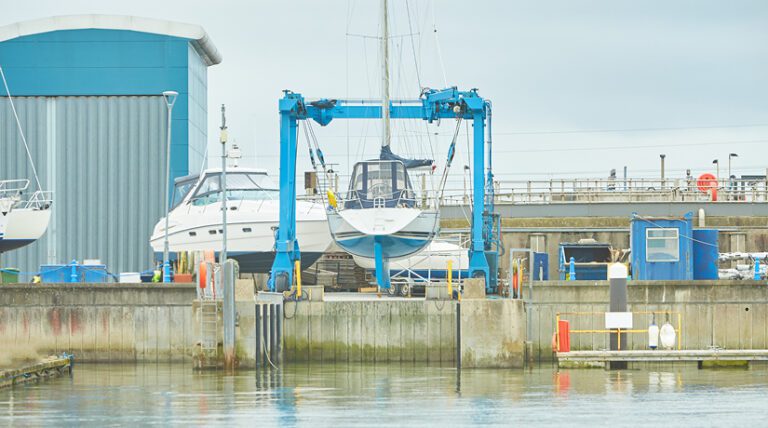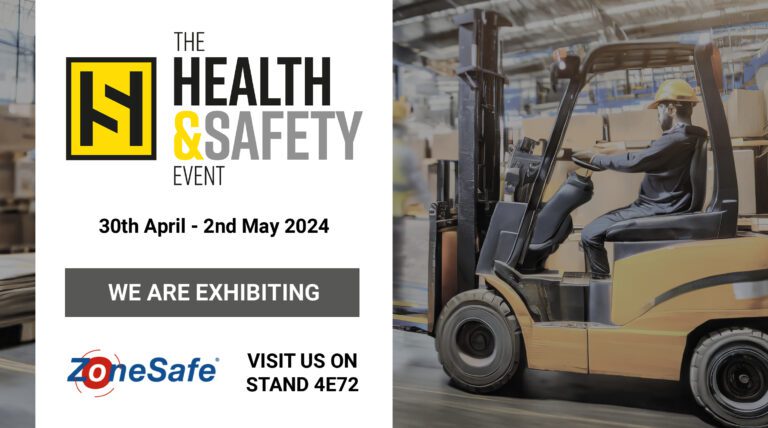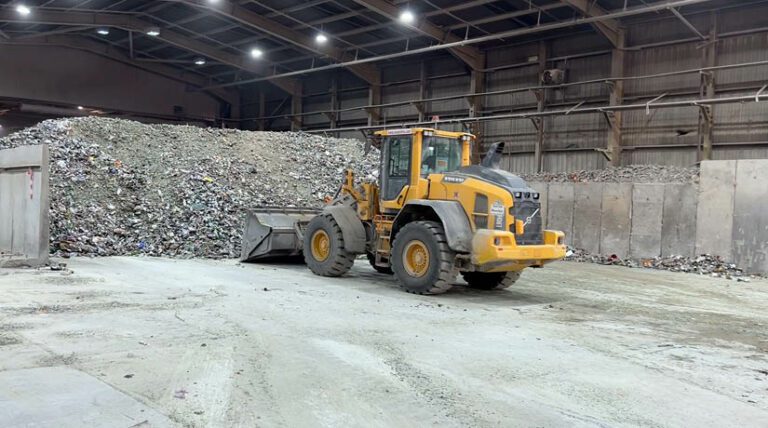
Improve pedestrian safety in ports and terminals
Ports and terminals can be complicated and busy work sites, as they operate 24 hours a day, in all conditions, with many contractors and employees, all carrying out different activities.
Ports or terminals have to operate with many different types of vehicles to ensure it is efficient – and all these vehicles are being operated while in the close proximity of pedestrians.
These are some of the advantages and potential disadvantages of different safety methods and technologies available to help reduce the risk of ports and terminals’ transport accidents.
Here are some examples:
Traffic management and segregation
Effective traffic management aims to reduce workplace transport hazards and provide a safe site. Where achievable, pedestrians should be segregated from vehicle movements, especially around container handling areas and access routes. Good traffic management with pedestrian and vehicle segregation offers passive control which manages risk without further action.
Where complete segregation cannot be achieved, traffic control measures such as speed limits, road signs, marked surfaces, lighting and walkways must be implemented to reduce risk. Training, monitoring and site inductions are essential to ensure all staff are fully aware of site hazards, risk areas and safe routes.
The advantage of implementing effective traffic management is that it can be achieved through careful design and layout which requires limited technical equipment and can have low installation and maintenance costs.
The main disadvantage is that it relies on personnel taking responsibility for their own safety and if site rules are ignored then little protection will be offered.
Mirrors
Mirrors are a simple vision aid which should be fitted to vehicles to allow the driver to see around the vehicle. There are different types of mirrors available to help reduce blind spots including wide angle convex, convex segmented and panoramic mirrors.
The advantages of mirrors are that they provide a low cost vision aid to areas of a vehicle which are hard to see from the driving position. Mirrors are prone to vibrations and convex mirrors are distorted which is a disadvantage as this can result in an unusable vision aid especially in wet and dirty conditions.
Vehicle camera systems – CCTV
Camera systems allow drivers to see blind spots and obtain views via a cab-mounted monitor. Cameras can be mounted to allow a machine operator to view multiple images at once. It is common on vehicles to see both convex mirrors and reversing cameras fitted.
The advantage of a well maintained and correctly fitted camera system is that they are quick and easy to implement and provide excellent all round visibility.
Their disadvantages are the operator must first see the problem and react accordingly. If the system is not maintained, combined with poor environmental and lighting conditions their effectiveness is greatly reduced.
Proximity Warning & Alert Systems by ZoneSafe
This is one way to improve pedestrian safety at ports and terminals that has very few disadvantages!
ZoneSafe uses RFID technology to set up an invisible 360° detection zone around a vehicle or asset. This is often referred to as the danger zone or collision risk area. Using detection antennas, single or multiple zones can be set up with a detection range of up to 9 metres.
This system includes:
- Antenna fitted to vehicle: Provides a complete 360° degree detection zone around the vehicle.
- Vehicle control box: Provides an audible visual alarm to the driver in the cab when personnel detected.
- Personnel tag: Personnel carry tags, which are detected by vehicles and trigger the alarm.
Vehicle options
ZoneSafe can be installed to al types of vehicles in ports and terminals, including reach stackers, container handlers, forklift trucks and terminal tractors – with a number of options available for either permanent or temporary installations.
Useful system add-ons
ZoneSafe can operate at walkways and crossings to warn of approaching vehicles, can be used with access control to prevent unauthorised access onto site and also utilised to protect high risk areas and objects from vehicle collisions.
For more information, visit www.zonesafe.net
Continue Reading

What Are The Best Active Signage Systems For a Marina?
Similar to any setting where vehicles and people interact closely, there are many risks around the marina environment. Heavy vehicles and cranes are often in…

Visit ZoneSafe at The Health & Safety Event
Our next exhibition this year comes at The NEC for The Health & Safety Event. This is a fantastic opportunity for you to explore the…

How to Improve Vehicle Safety In Your Waste Centre
Workplace transport accidents are one of the most common causes of serious injuries and fatalities in the waste management industry, and being struck by a…
Get in Touch
See how ZoneSafe can provide a solution for you Get in touch
